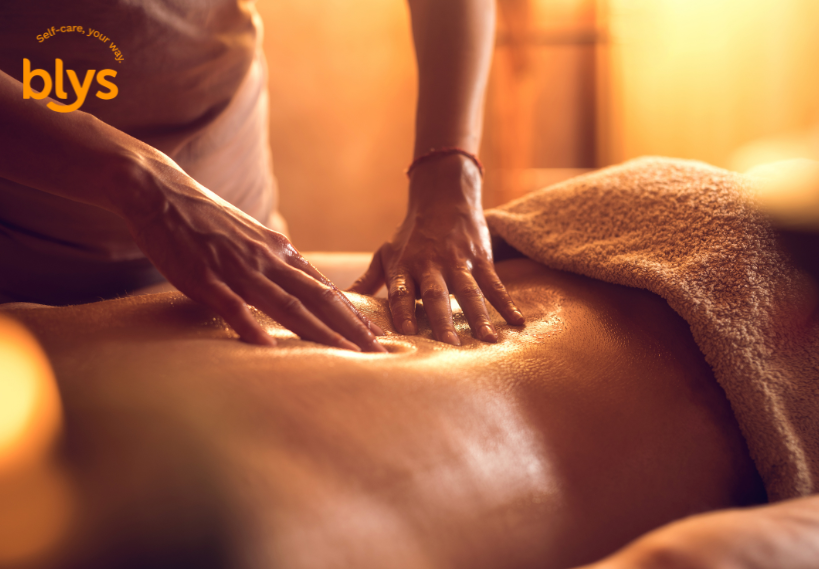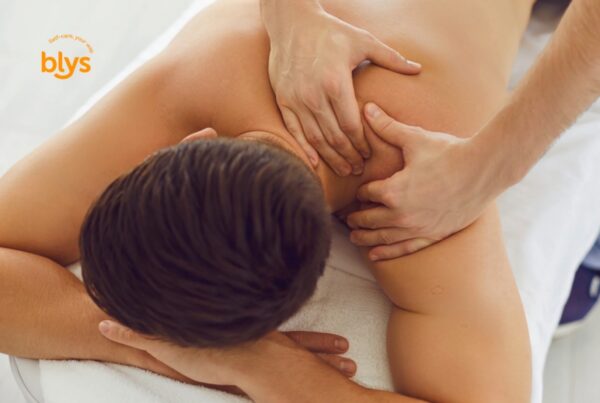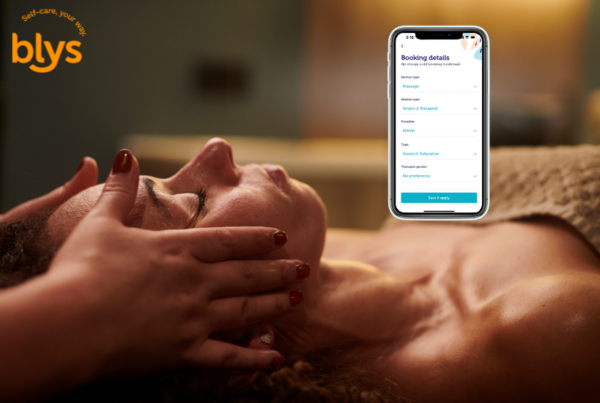
Deep tissue massage has a reputation for being intense, but for good reason. It targets the deeper layers of muscle and connective tissue to help relieve stubborn tension, knots, and chronic pain. Unlike a light, relaxing massage, this one means business.
It’s often the go-to option for people with muscle tightness, injury recovery, or postural strain. And while it can feel uncomfortable at times, that “hurts-so-good” sensation usually means your body is getting the release it needs. If you’ve ever wondered whether deep pressure is worth it, this guide breaks it down—so you’ll know when to book in and what to expect.
What Is Deep Tissue Massage?
Deep tissue massage is a targeted technique that works on the deeper layers of muscles and connective tissues. It’s designed to ease chronic pain, release muscle knots, and improve mobility by applying firm, slow pressure to problem areas.
While it may feel intense, it’s different from other types of massage that focus more on relaxation. Here’s how it compares:
| Type of Massage | Pressure Level | Main Focus | Best For |
| Swedish Massage | Light to medium | Relaxation and circulation | Stress relief, general relaxation |
| Remedial Massage | Variable | Injury recovery, function | Rehab, pain management |
| Deep Tissue | Firm and slow | Chronic tension, deep knots | Muscle knot relief, postural issues |
Unlike other approaches, deep tissue massage works through layers of tightness to create real change—and that’s why it can feel intense, but worth it.
If you’re spending long hours at a desk, you might also want to check out how massage helps with tech neck and screen fatigue—another common reason Aussies book deep tissue treatments.
When Do You Actually Need Deep Tissue Massage?
Deep tissue massage isn’t for every ache or cramp—but there are times when it can make a big difference. Here are some signs it might be the right choice:
- You’ve got chronic tension or stubborn muscle knots: Ongoing tightness, especially in your neck, shoulders, or lower back, often points to muscle knot relief needs. These “knots” are small areas where muscle fibres contract and don’t release, causing discomfort and limited movement.
- You work a physically demanding job or train regularly: Whether you’re an athlete, tradie, gym-goer or sit at a desk all day, repeated strain on the body leads to built-up tension. That’s where intense massage therapy comes in—offering deeper release and recovery.
- You’re recovering from an injury: Injuries like whiplash, overuse strains or post-surgery stiffness can all benefit from the increased circulation and tissue repair support that deep pressure provides.
- You experience poor posture or movement imbalances: Hunched shoulders, tilted hips, or uneven gait? These all lead to compensations in the body that deep tissue massage can help reset.
- You feel like stretching and rest aren’t cutting it: When basic recovery tools stop working, it could be time for firmer hands-on help to release what’s stuck deep within the tissue.
Not sure if it’s the right fit? Understanding the full range of benefits can help you decide when to book in.
Deep Tissue Massage Benefits (Backed by Research)
Deep tissue massage does more than ease sore muscles. Backed by clinical studies and practical use, here are six proven benefits that make it worth booking—especially if you need results that go deeper than surface-level relief.
Long-Term Pain Relief
Deep tissue massage is well-known for its ability to reduce chronic pain—especially in the lower back, shoulders, and neck. A study comparing deep tissue massage to general therapeutic massage found that those receiving deeper pressure experienced significantly greater improvement in chronic low back pain over multiple sessions.
It also helped with muscle tightness and movement restrictions. For those with fibromyalgia, similar pain-relieving effects have been recorded. This makes it a go-to option when lighter massages fall short.
Improved Blood Flow
One of the less visible but powerful benefits of deep tissue work is increased circulation. The firm, slow strokes stimulate blood vessels, which helps oxygen and nutrients flow more efficiently to your muscles and tissues. This boost in circulation supports healing, reduces swelling, and gives tired muscles what they need to repair.
It’s especially helpful for people recovering from physical exertion or experiencing sluggish recovery between workouts.
Reduced Inflammation
Inflammation is often a root cause of ongoing pain and fatigue. A 2023 study highlighted how massage—particularly with deeper pressure—can reduce inflammation markers and improve muscle recovery after strain. This benefit is especially useful after intense physical activity, long hours on your feet, or flare-ups of chronic conditions like arthritis or tendonitis.
Better Mobility and Flexibility
When your muscles are tight, your movement becomes restricted. Deep tissue massage works through thick layers of tension and adhesions (those sticky, fibrous knots that limit motion), helping restore flexibility. For anyone who struggles to touch their toes, rotate their shoulders freely, or stand without stiffness, deep tissue massage can unlock range of motion that’s been lost over time.
Mental Clarity and Calm
Tension in the body often reflects tension in the mind. Deep tissue massage can lower cortisol levels—the hormone linked to stress—while increasing serotonin and dopamine, the feel-good neurotransmitters that promote relaxation and focus.
The result? You feel not just physically looser, but mentally lighter too. It’s a natural stress reliever that supports clearer thinking, better sleep, and overall wellbeing.
Faster Muscle Recovery
If you’re someone who exercises regularly or has a demanding job, deep tissue massage can help you recover faster between efforts. It improves lymphatic drainage, reduces delayed-onset muscle soreness (DOMS), and speeds up your return to daily activity. It’s an ideal post-training or post-work recovery tool that doesn’t just feel good—it actually enhances your performance long-term.
Ready to feel the results? Book a mobile deep tissue massage with Blys and bring expert relief straight to your door—no travel, no stress.
Why It Can Hurt And Why That’s (Usually) Okay
If you’ve ever winced during a massage, you’re not alone. Deep tissue massage can feel intense—but in most cases, it’s a sign that your therapist is working through long-held tension and restrictions. Here’s why that pressure matters, and when to speak up.
- It breaks up adhesions and scar tissue: Deep tissue massage targets adhesions—tight bands of muscle or fascia that can limit movement and cause pain. These adhesions can form from injury, poor posture, or repetitive use. Applying firm, slow pressure helps release them, but the process can feel uncomfortable while it’s happening.
- It should feel like ‘good pain’: You know that stretch after a big workout—the one that hurts a little but also feels satisfying? That’s the kind of discomfort deep tissue massage should bring. It may feel intense, but it should never cross into sharp or alarming pain. Most people describe it as a deep, dull ache or strong pressure, not stabbing or burning.
- Know the difference between normal and not-so-normal pain
What’s normal: mild soreness during or after, slight sensitivity, warmth in the muscles.
What’s not: sharp pain, dizziness, numbness, or bruising.
Always speak up during your session—your therapist can adjust pressure to keep it within a safe, effective range.
- It can trigger a post-massage soreness: It’s normal to feel sore for up to 48 hours after your session—similar to how your body feels after a tough workout. This is part of your body adapting and recovering.
- Too much pressure is never the goal: Deep doesn’t mean painful. If something feels wrong, uncomfortable, or distracting, let your therapist know. They’ll adjust the intensity to ensure it’s helpful, not harmful.
Knowing how your body responds to deep pressure can help you decide if this massage style is the right fit—or if a gentler approach might serve you better.
Where to Get Quality Deep Tissue Massage in Australia
Finding a massage therapist you trust—who also understands how to apply the right kind of pressure—makes all the difference. That’s where Blys comes in. As Australia’s top-rated mobile massage platform, Blys connects you with fully qualified, insured, and vetted therapists who come to you—whether you’re at home, the office, or even your hotel.
You can book a deep tissue massage across all major cities, including Sydney, Melbourne, Brisbane, Perth, Adelaide, Canberra, and more. No travel, no waiting rooms—just expert care when and where you need it.
Ready to try deep tissue massage? Book now with Blys and bring expert care to your doorstep.





